
All categories
Featured selections
Trade Assurance
Buyer Central
Help Center
Get the app
Become a supplier

(1626 products available)


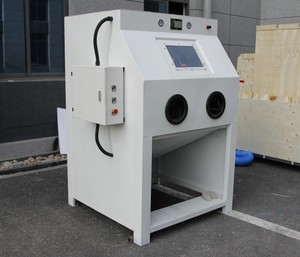
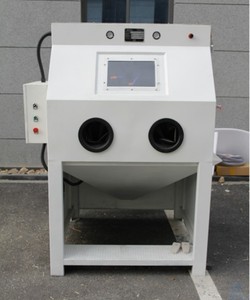

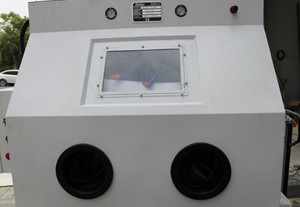
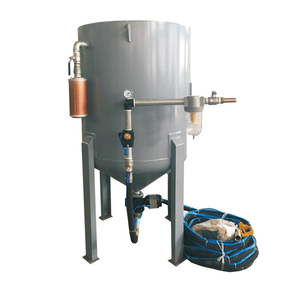
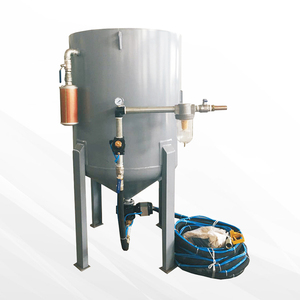



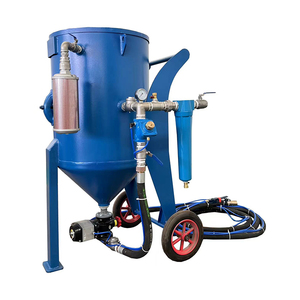








The abrasive flow machine is also called a grinding machine or polish machine. According to the working methods and the treated parts, it can be divided into five main categories.
Force Transfer System:
AFMs use a force transfer system, like pneumatic valves or hydraulic pumps, to push the abrasive media through the workpiece. The force of the system is usually between 1000 and 5000 pounds. Choosing an appropriate force transfer method and having a powerful hydraulic pump or valve are both essential for good surface finishing.
Abrasive Media:
The abrasive media is what polishes and smooths out the metal surface. Common types of media include alumina oxide, silicon carbide, or ceramic-tipped particles. The size and type of abrasive media should match the surfaces being worked on for AFMs to clean and polish effectively.
Workpieces:
Abrasive flow machines can handle different shapes and sizes of metal workpieces, like pipes, valves, pumps, and molds. The abrasive media must be able to access all the areas of the workpiece that need polishing. Specifically, it should get to hard-to-reach places like internal grooves and cavities.
Viscosity:
The abrasive slurry has to flow easily through the machine. Its viscosity can change depending on the percentage of abrasive grains, moisture in the air, and workpiece material. Regular checks of slurry viscosity should be conducted to make sure it is still within an acceptable range.
Abrasive flow machining (AFM) requires regular maintenance of its components and parts of the abrasive machine in order to ensure optimal functioning.
Weekly Machine Checks:
Each week, perform a thorough inspection of the entire machine. Look closely at all components, hoses, and connections. Make sure there are no abrasives clogging up any parts or leaks from hoses.
Daily Cleaning Routines:
Every day after each machining operation, the entire machine must be washed down thoroughly with water and a cleaning solution. All abrasives should be removed to prevent corrosion or damage. Pay close attention to complex areas where abrasives may get stuck. Complete daily cleanings like this prevents abrasive buildup from harming the machine over time.
Periodically Replace Parts:
Abrasive flow machines use many moving parts that wear out with frequent use. Be sure to regularly replace worn components like seals, hoses, and valves. Check these parts for damage or abrasives clogs periodically. Establish a replacement schedule based on the frequency of machine use. Reshoring damaged or excessively worn parts preserves proper machine function and performance over time.
AFM are widely used in various industries that manufacture component parts made of metal, alloy, carbides, and other hard materials.
Aerospace
The aerospace industry uses abrasive flow machines to improve the quality of engine parts such as manifolds andfuel nozzles. The elimination of burrs and achieving smooth, polished internal surfaces increase the efficiency of fuel pumps and nozzles. AFMs also enhance component parts such as turbine blades and exhausts to ensure they meet the industry requirement.
Automotive
AFMs are widely used in the automotive industry for deburring and polishing engine components, fuel injectors, cylinder heads, and exhaust manifolds. Smooth and polished fuel injectors ensure optimal flow and efficiency in the automotive industry.
Hydraulic
In the Hydraulic industry, abrasive flow machines help improve the performance of hydraulic valves and cylinders by deburring and polishing their internal passages. The smooth internal surfaces of hydraulic machines reduce fluid turbulence, ensuring smooth and efficient fluid flow in hydraulic systems.
Medical
The medical industry uses abrasive flow machines to produce and improve surgical instruments, implants, and customizable medical devices. An AFM machine achieves smooth, biocompatible internal and external surfaces on medical device components such as implants and catheters.
Textile
Abrasive flow machines assist the textile industry in polishing and deburring textile machinery components, including needles and looms. Smooth and precise textile machinery parts ensure high-quality textile production.
When looking for an abrasive flow machining service, there are several critical factors to consider. Initially, the service needs to have a multitude of machines and capabilities to attend to various requirements and budgets. Moreover, the machines used by the service need to be of high quality, which is well maintained and with skilled operators. This ensures that they achieve optimal results for their clients. The flow rate of the machine should also be taken into consideration, as it will have an impact on how quickly projects are completed and at what cost.
It is also important to ensure that the parts to be deburred or radiused are suitable for abrasive flow machining. Complex internal passages and geometries may not be ideal for this process. Client requirements such as cost target, turnaround time, and acceptable deburring levels should also be considered, as well as the service’s ability to provide rapid production rates in a cost-effective manner. If unsure about the suitability of a specific part for abrasive flow machining, it would be best to consult with an expert in the field.
The abrasive flow machine price will often correlate with the type of machines in question. Benchtop machines are more affordable than their larger counterparts, such as the robotic cell or custom machines. This is because the latter types are more complex, have more parts, and offer greater capabilities. It is worthwhile to note that although they are an investment, they will save time and money in the long run.
Q: What kind of machines does abrasive flow machining include?
A: abrasive flow machining combines several types of machines. The basic machine is the abrasive flow machine itself. Add-on machines include workpiece fixturing machines, media loading and recovery machines, machine interface add-on devices, and automated control systems.
Q: What are the key differences between abrasive flow machining and traditional machining methods?
A: The primary flow machining is a cutting method that uses an abrasive-filled viscoelastic polymer to deburr, polish, and radii internal and external part features. Unlike traditional machining methods, abrasive flow machining can reach complex geometries and uniformly remove material from workpieces.
Q: How does abrasive flow machining ensure uniform material removal?
A: Uniform material removal is typical of abrasive flow machining thanks to the consistent flow of the abrasive media and the controlled parametric abrasive flow machining cycles. Additionally, the viscosity of the media aids in even material removal.
Q: What are some limitations of abrasive flow machining?
A: While abrasive flow machining offers several advantages, it also has some limitations. These include the inability to remove large amounts of material quickly and the process duration, which can be longer than other techniques for specific applications.